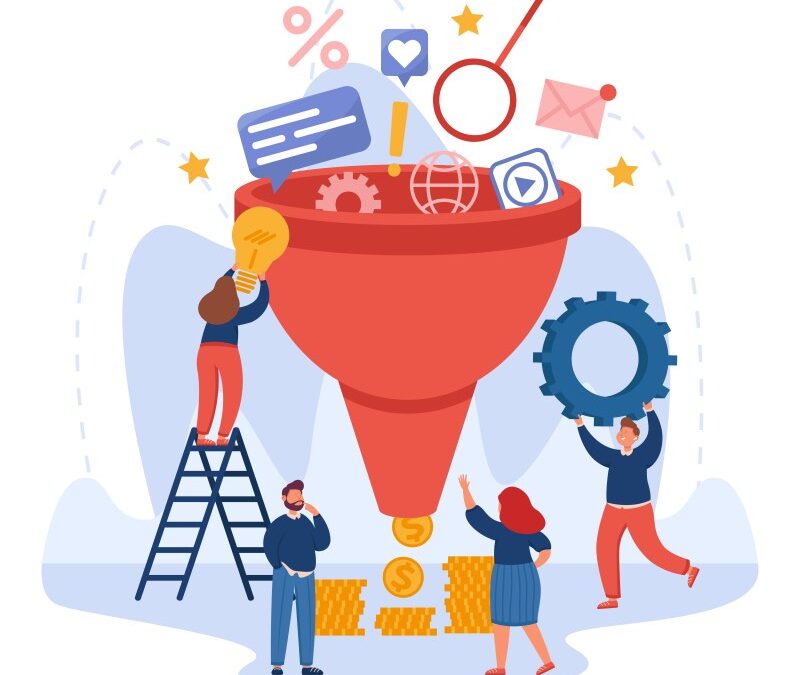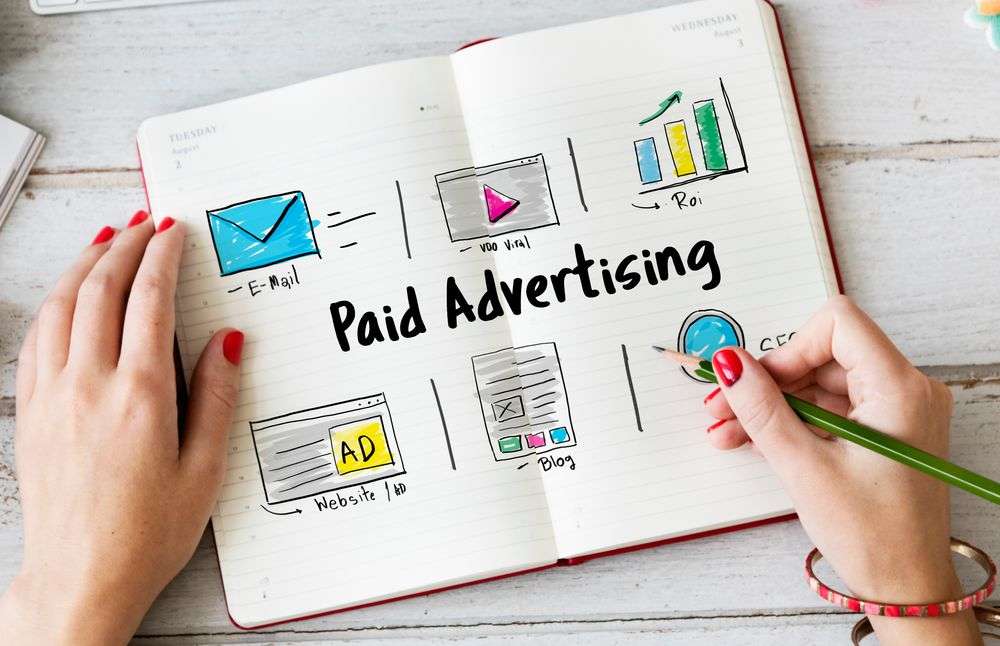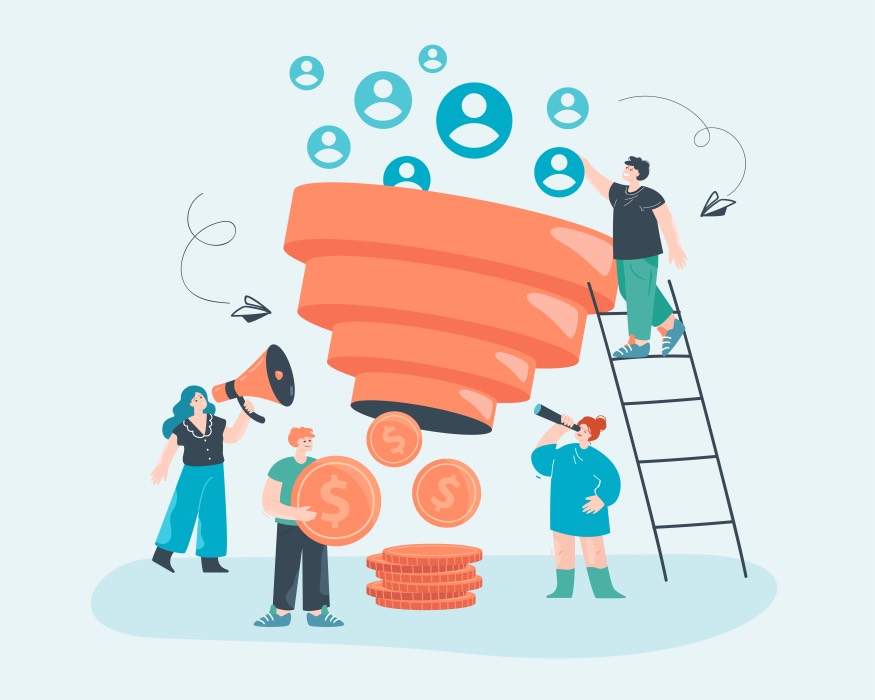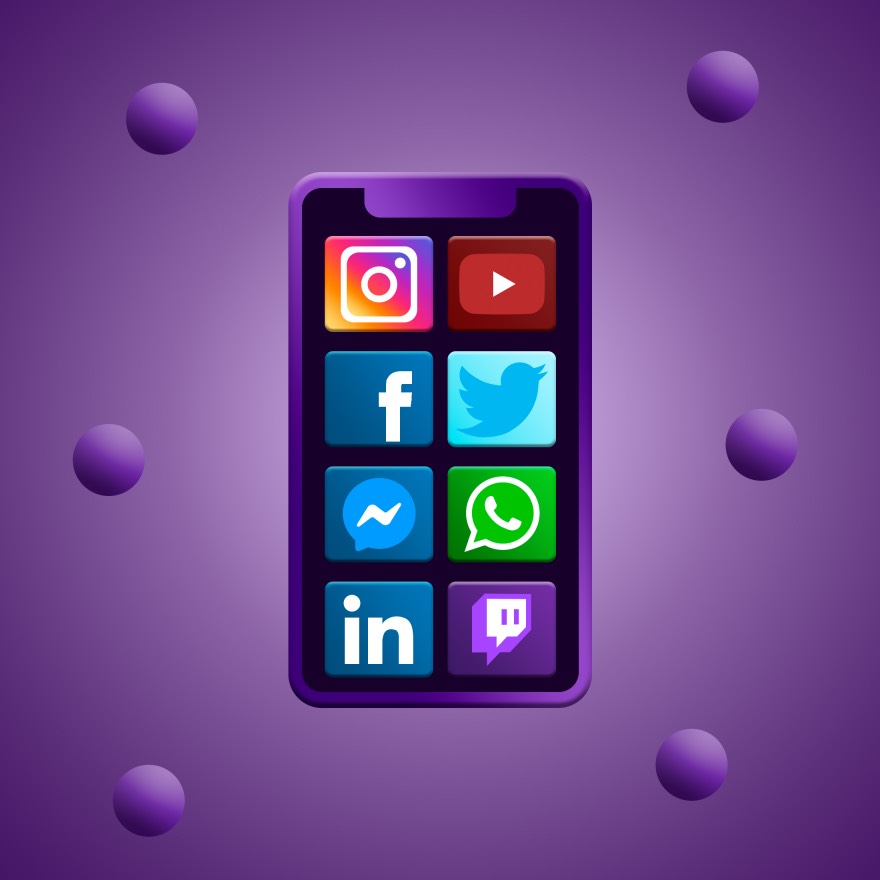The benefits of paid ads are plentiful for a business looking to make it big online. But as time passes, performance dips, your creative assets run dry, and potential customers seem to be skirting your online presence.
What do you do next?
Naturally, you take a big picture approach and revisit your original launch campaign objectives. What do your key goals look like then and now? How effectively were you catering to your target audience in the various stages of your marketing funnel? Have your success-measuring metrics changed?
If you find yourself hesitating over any of your digital marketing aspects, then it’s time to rethink your marketing strategies.
What You Need to Know About the Field of Paid Advertising Campaigns
B2B marketing isn’t like your usual marketing tactics; it requires strategic initiatives set up for long-term functioning, with dedicated follow-through at every point of your buyer’s journey.
You need to acknowledge the fact that you’re dealing with multiple decision-making situations and the decision makers, there are longer sales cycles with omnipresent navigation, numerous budget approvals, and other comprehensive marketing efforts.
It also means that at any given point in time you’ll have prospects at various stages of your marketing funnel.
Some may have just entered your funnel while some others are acquainted with your product but not sure of the final purchase. And then there are those that are in the process of comparing your services against your competitors, seeking concrete service assurance.
Your role in this web of a sales funnel is to show up and satisfy the user where they’re at in the funnel with exactly what they need.
You can’t afford to stick to a one-size-fits-all approach when no prospect is the same! Your priority is to invest in your audience and nurture the relationship to mutual fruition.
What is Paid Media Advertising?
Paid advertising is a type of marketing where businesses pay to show their adverts on third-party websites or platforms to drive website traffic. The most common examples are Facebook and Google Ads, TV ads, paid social media, and more.
Paid ads are a great way to reach new audiences and grow your business quickly. They can be targeted to specific demographics, interests, and even geographical locations. And, best of all, you only pay when someone clicks on your advert (known as ‘pay-per-click’).
Paid advertising through social media advertising can be an effective way to boost traffic to your website and generate leads for your business. However, it’s important to remember that there is no guarantee of success and you will need to invest time and money into creating successful marketing campaigns.
What is a Full-funnel Marketing Strategy?
When it comes to marketing, the “funnel” refers to the path that potential customers take as they move from awareness of a product or service to purchase. A full-funnel marketing strategy is one that takes potential customers all the way through this process, from initial awareness to post-purchase loyalty.
The goal of a full-funnel strategy is to build relationships with customers, increase brand awareness, and create loyalty, rather than simply drive sales. To do this, marketers need to create content that is relevant and useful at every stage of the journey.
For example, early on in the sales funnel, the content might focus on raising awareness of a problem or need that the customer may not be aware of. Further down the marketing funnel, the content might provide solutions or product recommendations to help the customer make a purchase.
And finally, post-purchase content might focus on customer service or upselling additional products. By providing value at every stage of the journey, full-funnel marketing helps to create long-term relationships with customers.
In a nutshell, a full-funnel approach involves marketing aspects like content marketing, digital marketing strategy, and audience targeting to seamlessly integrate with the stages of a sales cycle in a marketing funnel to give you the best of your paid media advertising efforts.
Do you want to build an effective paid advertising funnel?
Contact Growth Hackers
What are the various paid media channels available to reach your target audience?
Paid media is a broad term that covers any type of advertising that you pay for, as opposed to earned or owned media. While there are many different paid media channels, they all share one common goal: to reach potential customers and persuade them to take action.
If you’re wondering which paid media channel is the best to build brand awareness for your custom audience, here are a few marketing channels to consider.
1. Display Advertising
Display advertising is a type of paid media advertising that typically takes the form of banners or other graphic ads placed on websites. It relies heavily on impressions, which are the number of times an ad is seen by potential customers.
Because of this, display advertising is often considered to be a brand awareness tool rather than a direct sales channel. However, research has shown that display advertising can be effective in both promoting brand awareness and driving sales.
In fact, one study found that display ads led to a significantly higher likelihood of purchase intent compared to other types of paid media. Leveraging retargeting thanks to display ads will help you improve your CPS advertising strategy greatly. As a result, display advertising should be considered a key paid media channel for any business that is looking to reach a wide audience.
2. Programmatic Advertising
Programmatic advertising is a paid media advertising channel that uses technology to automate the buying and placement of ad inventory. Programmatic ad buying represents a shift from the traditional, human-driven process of buying and selling ad space to an automated system that relies on software to make decisions about which ads to show, when to show them, and how much to pay for ad space.
This process has a number of advantages over more traditional methods including greater efficiency, transparency, and control. It allows for much more precise targeting of ads since ads can be served based on user interests, demographics, and even past behaviors.
Additionally, programmatic platforms can provide detailed tracking and reporting data, so advertisers can see exactly how their campaigns are performing. Finally, programmatic buying can often save advertisers money by getting them cheaper ad rates than they could get through manual negotiations.
3. Awareness and Conversion Ads
In the world of online advertising, there are two main types of ads: those that generate awareness (branding ads) and those that generate conversions ( performance-based ads).
Branding ads are designed to build name recognition and create an association between a product and positive feelings or emotions. Performance-based ads, on the other hand, are focused on generating a specific action, such as clicking on a link or making a purchase.
Conversion ads are a type of performance-based advertising that specifically aims to generate leads or sales. In order to be effective, conversion ads must be well-targeted and relevant to the customer’s needs.
Additionally, they should include a strong call-to-action that clearly states what the next step is for the customer. When used correctly, they can be a powerful way to reach potential customers and convert them into paying customers.
4. Paid Social Media Advertising
Paid social media advertising can be an effective way to reach your target audience with relevant, timely messages. There are a number of platforms to choose from, each with its own strengths and weaknesses.
For example, Facebook is great for targeting a wide audience with interests that match your products or services, while LinkedIn is better suited for reaching professionals in specific industries.
There are also a number of smaller networks that can be worth considering, depending on your target audience. The key is to experiment and find the platform that works best for you.
Paid social media advertising can be a great way to reach new customers and grow your business. But like any form of advertising, it takes time and effort to get the most out of it.
5. Search Engine Marketing
Search engine marketing (SEM) is a form of paid online advertising that allows businesses to promote their products and services through sponsored listings on search engine results pages (SERPs).
SEM offers businesses an effective way to reach potential customers who are actively searching for the types of products and services they offer. In addition, SEM can be customized to target specific audiences, making it an effective tool for lead generation and reaching both broad and niche markets.
Paid search advertising (paid ads) is also highly measurable, allowing businesses to track and optimize their campaigns for maximum results. As a result, SEM is an effective and versatile marketing tool that can be used to achieve a variety of advertising campaign objectives.
6. Email Marketing
Email marketing is one of the most effective paid media advertising channels available. It allows businesses to directly target potential customers with highly personalized messages. In addition, email marketing is very cost-effective, often providing a higher return on investment than other paid media channels.
And because email addresses are easy to obtain, businesses of all sizes can effectively use email marketing to reach their target audiences. As a result, email marketing should be a key part of any paid media advertising campaign.
Now is the time to create a profitable paid advertising funnel for your business!
Leveraging the Right Marketing Strategy at Every Step of the Paid Advertising Funnel
In order to be truly effective, your paid advertising needs to take into account the different funnel stages of the marketing funnel.
Also, it’s important to note that not all customers will progress through all stages of the funnel – some may go straight from awareness to purchase, while others may need a little more convincing. That’s where paid advertising comes in.
By targeting your ads at each stage of the marketing funnel, you can ensure that your message is resonating with your audience at every step of their journey.
From top-of-the-funnel ads designed to raise awareness, to bottom-of-the-funnel ads designed to prompt a purchase, a well-planned paid advertising campaign can help you make the most of your marketing budget and reach your business goals.
Here are three crucial steps to bear in mind when building your solid paid advertising funnel.
Step 1: Create Awareness
The awareness stage is all about getting your brand in front of as many people as possible. That means using a mix of different platforms and strategies to reach your target audience where they’re spending their time.
This can include things like display advertising, social media ads, email marketing, and even traditional forms of advertising like billboards and TV commercials. The goal is to create a strong impression and get people interested in your product or service.
Facebook ads are a highly preferable option since they allow audience targeting to accurate levels based on demographics, behaviors, and interests. Once you’ve captured their attention, you can move on to the next stage of the funnel.
Step 2: Nurture Engagement
In the engagement stage of a paid advertising funnel, it’s important to nurture your leads with relevant and targeted content. However, you’ll want to ensure this stage of the funnel works through gated content that requires your user’s email addresses for further meaningful marketing through email marketing.
Say, if you’re selling a new product, you might want to create a series of blog posts or e-books that introduce the product and explain its benefits. If you’re selling a service, on the other hand, you might want to create an instructional video or webinar that walks potential customers through the process.
By providing leads with the right kind of content at the right time, you can dramatically increase your chances of conversion. Another way you can create demand for your product/service is by limiting its availability through a limited-time offer and timely countdown reminders.
Step 3: Take Action
This is where all your hard work – and money – comes together as potential customers take the desired action. Of course, not every customer will take the same action. That’s why it’s important to have a clear understanding of your goals before you even start creating your ad.
Once you know what actions you want customers to take, you can design an ad that speaks directly to them. For example, if you’re selling a new skincare product, you might create an ad that includes a coupon for 20% off their first purchase.
Or, if you’re promoting a webinar, you might include a registration link. No matter what action you want customers to take, make sure your ad includes a strong call to action that motivates them to act now.
Keep working on that ticking countdown timer to create a sense of urgency or miss out on a discounted offer. Put in user testimonials to boost your credibility either through videos or image carousels.
Paid Advertising Funnel efforts Are Never-ending
After you’ve created your paid advertising funnel, it’s important to monitor, measure, and adjust as needed to ensure success.
Closely monitoring key metrics such as reach, impressions, click-through rate (CTR), and conversion rate will allow you to identify any areas that need improvement. By making small tweaks along the way, you can fine-tune your funnel and improve your results.
Paid marketing initiatives can be a great way to reach new customers and grow your business. But if you’re not strategic about your approach, you could end up wasting a lot of money.
That’s where Growth Hackers, an award-winning sales funnel agency comes in. We specialize in helping businesses make the most of their paid marketing initiatives, ensuring that every dollar is well spent.
With our help, you’ll be able to create targeted campaigns that reach your ideal customer base. We’ll also work with you to track and optimize your results so that you can see a real ROI from your investment. Best of all, we’ll help you sustain your growth over the long term by creating a comprehensive strategy that includes both paid and organic marketing tactics.
Ready to take your marketing to the next level? Contact Growth Hackers today to learn more about how we can help.








